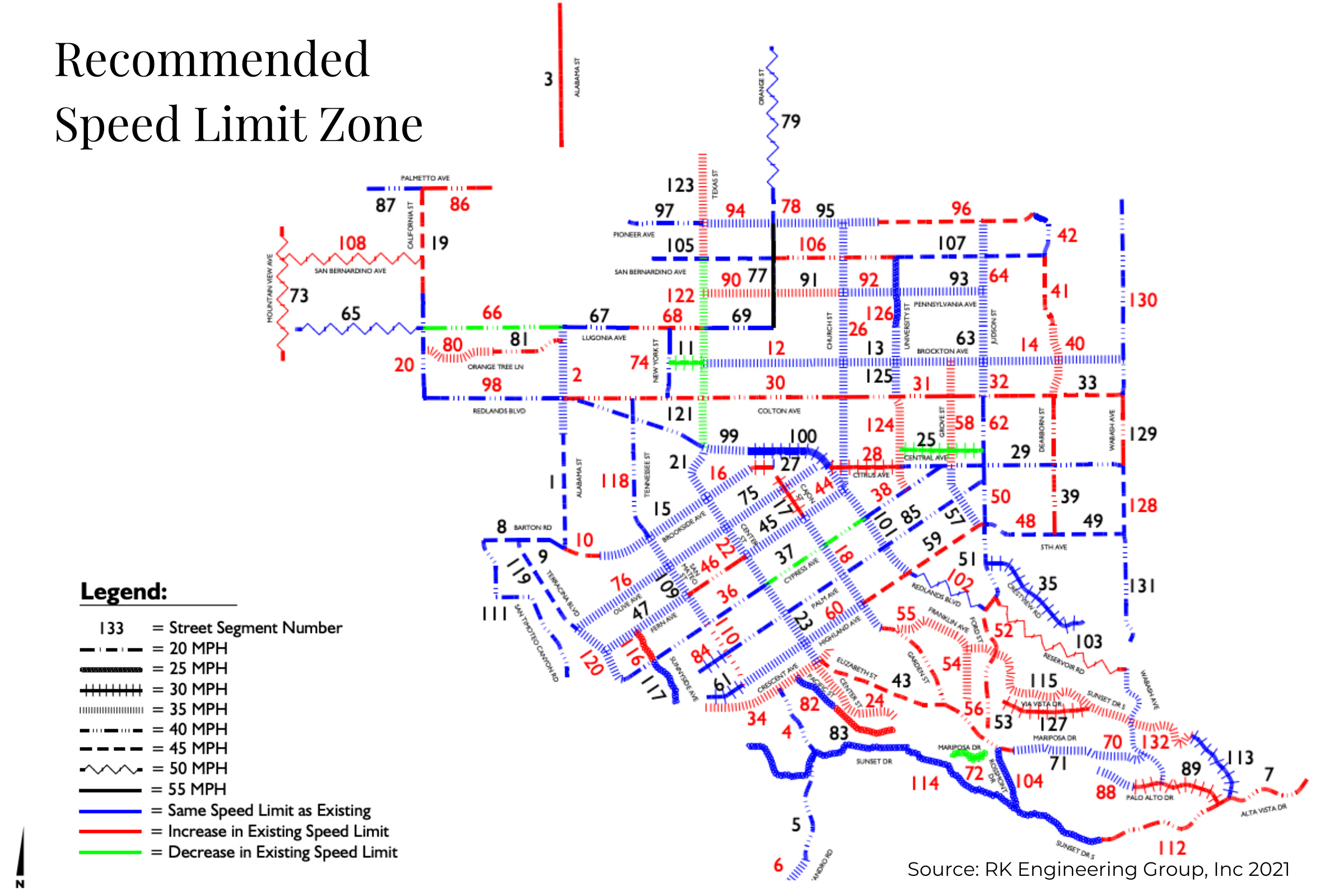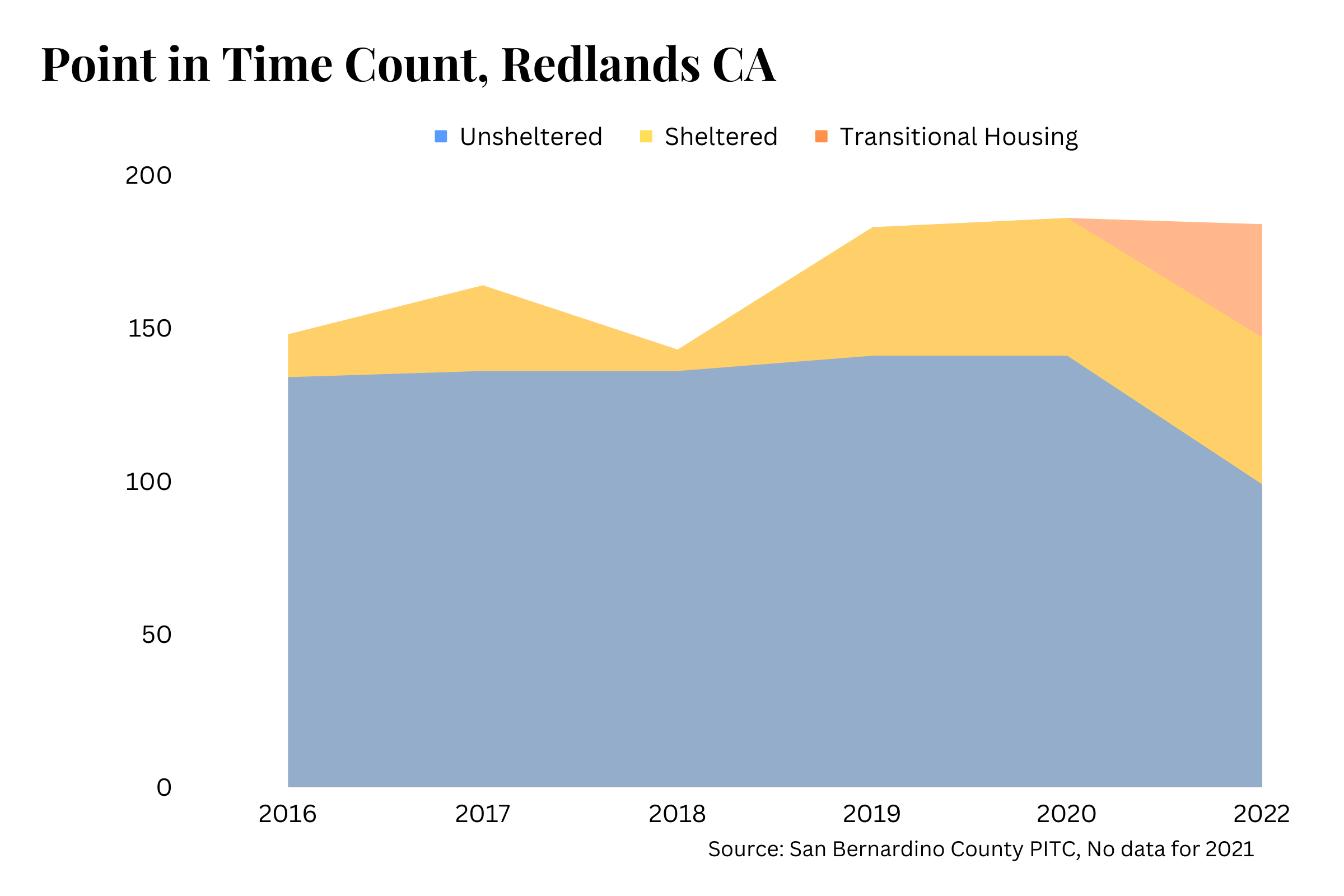Downtown Morning Market returning after winter hiatus
The city says Downtown Morning Market returns March 7. A survey found nearby businesses saw mostly neutral or positive impacts.
How a 50-year-old traffic control method is pushing up speed limits in neighborhoods around Redlands, plus other news from Nov 15 City Council meeting.

REDLANDS, Calif— In order for police to continue enforcing posted speed limits, City Council reluctantly approved new speed limits on roughly 50 roadways in Redlands.
In most instances, the speed limit was increased by 5 miles per hour. (You can view the full list here.)
While a 5 mph speed increase might seem minor, the method used to set speed limits has resulted in a gradual increase over time. It’s based on something called the 85th percentile rule. Using this method speed limit on roadways is set by the speed 85% of people drive at or below, rounded to the nearest 5.
The State of California requires local governments to perform engineering speed studies every 7-14 years. The traffic survey recommends new speed limits based on the 85th percentile rule. The decades-old California law, originally intended to protect people from speed traps, requires local governments to adopt the recommended speed limits with few exceptions. If the City did not adopt the new speed limits, police would not be legally allowed to issue speeding tickets.
The application of the 85th percentile rule today means speed limits on city streets have gradually increased. Raising speed limits causes drivers to go faster which leads to even higher numbers in the next survey, and the survey after that. It’s called speed creep and local governments have little control over lowering speed limits.
Below you can see where speed limits are changing based on the 2021 survey. This map created for the survey shows where speed limits are increasing in red and decreasing in green.

On Tuesday, opposition to the higher speed limits came from both residents and City Council.
One resident shared how the speed limit on a street in her neighborhood rose 10 mph in less than a decade, despite its proximity to an elementary school and areas of limited visibility. After the 2015 Engineering and Traffic Survey, the speed limit on Elizabeth Street, between Garden Street and Crescent Avenue, increased from 35mph to 40mph. The most recent 85th percentile speed on this road clocked in at 49 mph, according to the 2021 survey. This means the new speed limit on Elizabeth Street will be 45mph. The woman said she was concerned for the safety of children in the area.
In other public comments, members of the Parking and Traffic Commission shared concerns that the 85th percentile rule ignores the safety of pedestrians and cyclists. Eric Shamp, a member of the Parking and Traffic Commission, said the method does not support the City’s walkability goals or mix-used development plans. He went so far as to ask the City Council to reject the new speed limits altogether and request a new survey that takes into account the needs of all road users. Another resident, who also serves on the Parking and Traffic Commission, encouraged City Council to find a way to increase police patrol to address speeding.
The new speed limits come at a time when the police department has limited resources. During the meeting, Police Chief Chris Catren said the department shares the concerns of residents and reported that there are as few as two officers available to handle traffic citations and respond to accidents. (According to city officials, the lack of police officers is an issue of available qualified applicants, not funds.)
How much the city can deviate from the 85th percentile method is limited. For example, the current State law allows the City Engineer to adjust the 85th percentile speed up or down by five miles per hour “if there are sufficient conditions not readily apparent to the driver.”
Exceptions for lower speed limits were made in a few locations in Redlands after considering road conditions and the concerns of residents in those neighborhoods.
Local governments will soon have more authority to set lower speed limits. Assembly Bill 43 signed into law in October 2021 provides more leeway for cities to set lower speed limits near schools and pedestrian areas. Under portions of the new bill, Los Angeles lowered street limits on about 117 miles of City streets in March. By June 2024, the law allows for even more speed limit reductions.
Following public comment, the city council members did not want to move forward with increasing the speed limits but their options were limited. Without adopting the new survey many local speed limits would not be enforceable. The City Council reluctantly passed the ordinance so police can continue to issue speeding tickets.
The City Council plans to revisit the speed limits in 2024.
You can look at the full list of new speed limits that were adopted here.
More resources and support are going to aid unhoused residents in Redlands. City Council approved a new Homeless Street Outreach Program to be run by Step Up on Second, Inc. and Youth Hope. The initial $200,000 in funding came from the Coronavirus State and Local Fiscal Recovery Funds. It will fund the program for one year.
Step Up on Second has partnered with the City of Redlands’ transitional housing project. Through the outreach program, Step Up will continue to offer a 2-person team to support people that are unhoused in the city of Redlands. Youth Hope, which assists homeless youth between the ages of 14-24, will also have an outreach team targeting homeless youth in the city.
According to the staff report, “street outreach” is important to connect unhoused residents with services they might not otherwise know about. In addition, program coordinators will be able to use housing assessments and the HUD Homeless Management Information Systems to help quickly house residents.
According to the 2022 Point in Time Count, there were 187 persons living on the street in Redlands. In the last four years, the number of houseless people has remained around 180. The share of that group in shelters and transitional housing has improved since 2020.
Here’s a look at the numbers from Point in Time Counts since 2016:

The outreach program is expected to help more unsheltered residents find transitional housing. City officials are hoping to maintain lower numbers long term.
The next point in time count will take place in January 2023.
If you’ve been considering replacing your grass lawn with a more drought-resistant alternative, now might be the time to save on both water and money.
According to recent reports, about 40-50% of residential water is used on lawns in Southern California. Earlier this year, Governor Newsom called for increased water conservation, threatening state regulations if local communities can’t reduce water use on their own. In response, the Redlands City Council approved an additional $50,000 toward the City’s Water Efficiency Rebate Program.
Under the new rebate, residents can get $1 per square foot for Drought Tolerant Landscape Conversion with a cap of $1,000. To qualify for the rebate you must be replacing a grass lawn with low-water and drought-resistant plants. There’s also a requirement that the landscape is 80% plants, examples can be found here.
While putting more funds towards organic landscaping, synthetic turf rebates were removed from the program. A staff report cites the negative environmental impact of artificial grass including evidence that it causes a heat island effect, it’s not recyclable, it does not provide animal habitat and its manufacturing adds to carbon emissions. The city of Redlands follows a number of other Southern California cities also excluding artificial turf from their rebate programs including the cities of Anaheim, Fullerton, Long Beach, and Beverly Hills.
In addition, the High-Efficiency Washing Machine rebate was increased from $100 to $200.
For more information on these rebates go here.
The City issues Proclamations as a way to acknowledge and honor members of the community or to show support and solidarity for a cause. This week Redlands City Council issued three proclamations.
A look at the increasing number of homeless and foster youth in Redlands and how one of their biggest safety nets is helping them not only survive but build a brighter future.
Sign up for our weekly newsletter